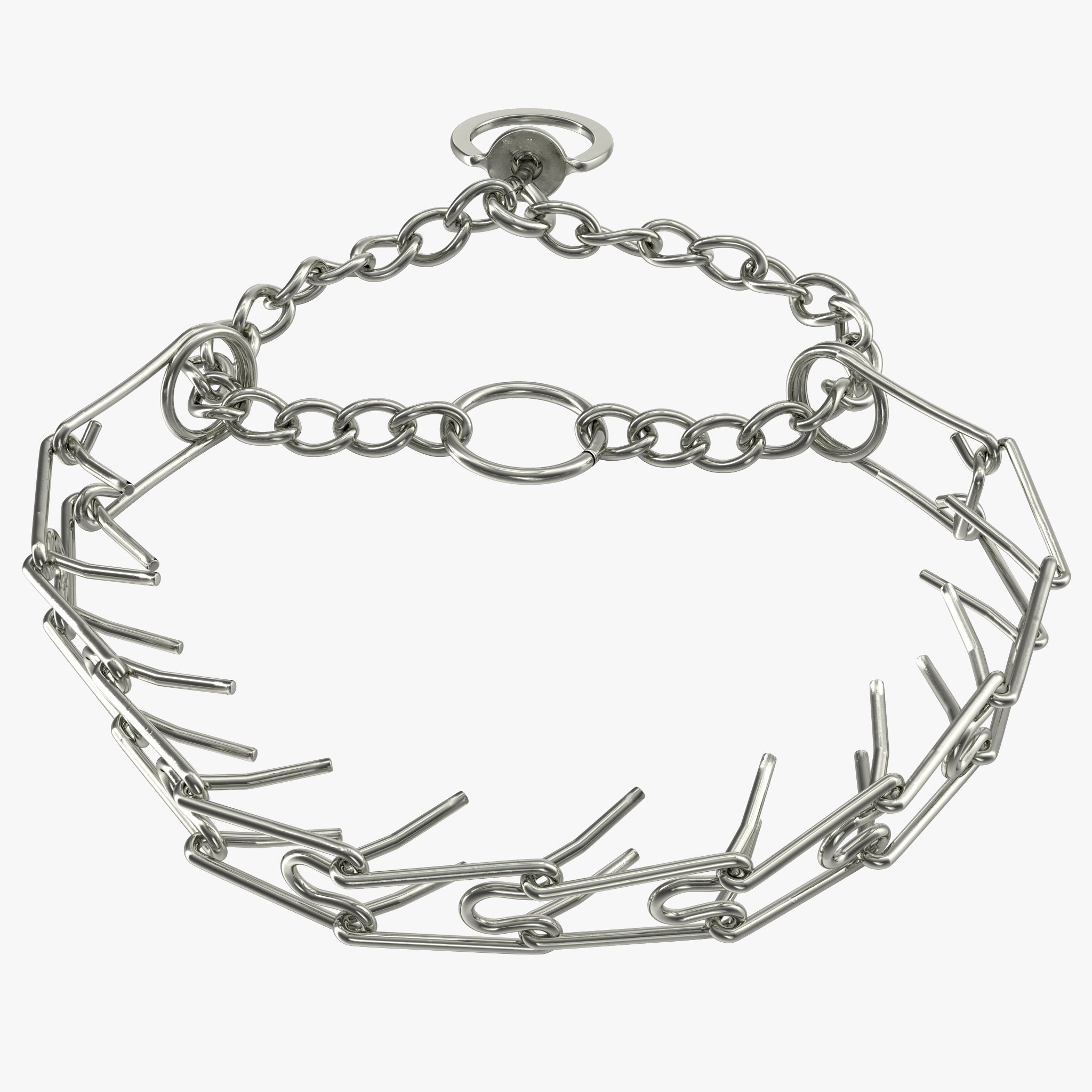Prongs-Yay or Nay?
A recent discussion on The Stannyfield Gang, our private Facebook Group for our puppy owners, prompted Teddy Green of Daytripper Dog Training to write an educational article on why prong collars are problematic as training tools. As an expert in her field with an extensive knowledge base, her advice is an invaluable asset to us all. We are grateful for Teddy’s permission to share her article.
For those who don’t know me, I’ve been a professional trainer for approximately 28 years, and a behaviour consultant for close to 25 of those years. One of my passions is continual professional development. I owe it to myself, my personal dogs, my clients and their dogs to be educated regarding current training methodologies and canine behaviour research.
Before I go further, I want to say that my intent is to educate not to make anyone feel bad or guilty. (Full disclosure: In the 80’s I trained one of our family’s dogs using a prong collar. Why? Because the professional, the expert, recommended one.)
When I first began my foray into professional training, the trainer who mentored me put training into very simple terms. Dogs either work to GET something (a reward, safety, comfort, etc) or to AVOID something (discomfort, pain, fear, etc). In my early training days when I had yet to develop personal dog training ethics, I asked myself the question, “Is the
dog working to get something or avoid something?” Answering honestly helped me make the best choices for my own dogs and clients’ dogs.
I’ll be blunt—prong collars hurt. That’s why they “work”. They suppress behaviour as the dog attempts to avoid the discomfort/pain. Prong collars seem like a quick fix. The problem is the dog isn’t learning to walk on a loose leash. Rather, the dog is learning to avoid pain while the collar is on. Take the collar off and your dog will pull because he/she hasn’t been taught what to do.
In her Aug 20, 2017 blog post “Why Prong Collars Hurt”, Eileen Anderson explains the physics of a prong collar. Both flat and prong collars put pressure on a dog’s neck. The difference is with a flat collar, the pressure is exerted over a larger area. The pressure exerted on a prong collar is concentrated over multiple small surfaces (the prongs). Think of it as the difference between stepping barefoot on a brick vs. barefoot on a single piece of Lego (see excerpt below from Eileen’s blog).
Pressure on flat collar under 5 pounds of force: 0.36 pounds per square inch
Pressure on prong collar under 5 pounds of force: 56 pounds per square inch
Many trainers falsely claim that prong collars don’t hurt. To demonstrate this, they will put the collar on their forearm and pull, but this is misleading. Critical thinking must lead us to the conclusion that this is not the same as what a dog feels on their neck. To determine if prong collars truly do hurt, in 2013 Canadian trainer Yvette Van Veen took it one step further. She put a prong collar on her own neck, attached a leash while on all fours and had her husband pull on the leash. She wrote a blog post, Pinch Me A.K.A Prong Me, about the results of her experiment. Additionally, the American Veterinary Society of Animal Behaviour’s (AVSAB) free position statement on humane dog training recommends avoiding aversive training methods including use of prong collars.
Rather than simply following advice, asking the question WHY can also help us make better choices for our dogs. Have you ever wondered why some trainers recommend positioning a prong collar high on a dog’s neck, claiming it’s more effective when high on the neck? Why? Because the pressure is exerted on the cranial and other nerves at the base of the dog’s skull. In other words, it hurts more when positioned in this manner.
I want to reiterate that my goal is not to make anyone feel bad or guilty about their training equipment choices. As I said, I’ve used a prong collar. To me, it falls under the categories of ‘you only know what you know’ and ‘when you know better you do better’.

